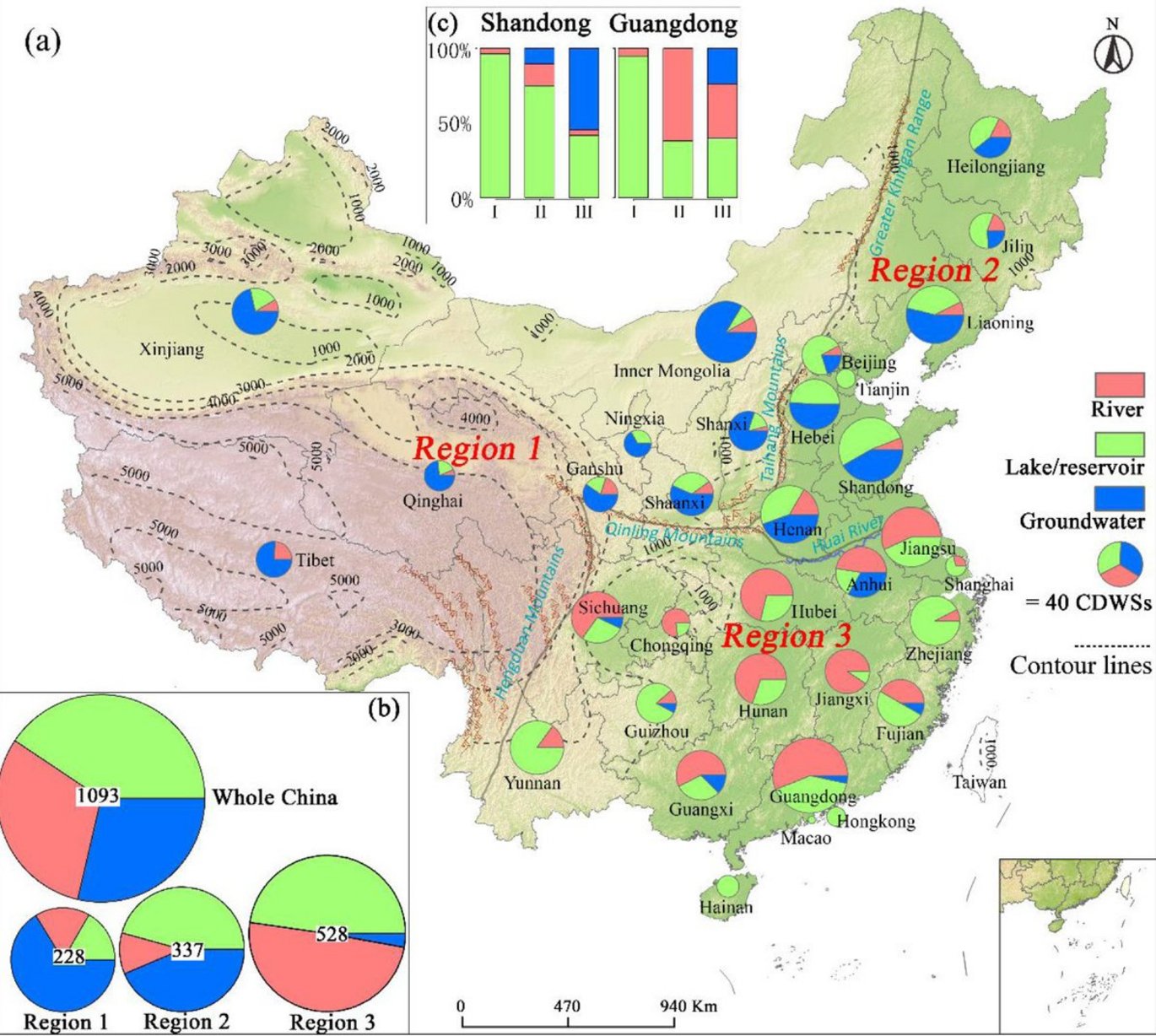Importance and vulnerability of lakes and reservoirs supporting drinking water in China
New publication by Zhang, Yunlin; Deng, Jianming; Qin, Boqiang et al.

Abstract:
Drinking water is closely related to human health, disease and mortality, and contaminated drinking water causes 485,000 deaths from diarrhea each year worldwide. China has been facing increasingly severe water scarcity due to both water shortages and poor water quality. Ensuring safe and clean drinking water is a great challenge and top priority, especially for China with 1.4 billion people. In China, more than 4000 centralized drinking water sources including rivers, lakes and reservoirs, and groundwater have been established to serve urban residents. However, there is little knowledge on the percentage, serving population and water quality of three centralized drinking water source types. We collected nationwide centralized drinking water sources data and serving population data covering 395 prefecture-level and county-level cities and water quality data in the two most populous provinces (Guangdong and Shandong) to examine their contribution and importance. Geographically, the drinking water source types can be classified into three clear regions exhibiting apparent differences in the respective contributions of rivers, lakes and reservoirs, and groundwater. We further found that overall, lakes and reservoirs account for 40.6% of the centralized drinking water sources vs. river (30.8%) and groundwater (28.6%) in China. Lakes and reservoirs are particularly important in the densely populated eastern region, where they are used as drinking water sources by 51.0% of the population (318 million). Moreover, the contribution to the drinking water supply from lakes and reservoirs is increasing due to their better water quality and many cross-regional water transfer projects. These results will be useful for the government to improve and optimize the establishment of centralized drinking water sources, which provide safe and clean drinking water in China to safeguard people's lives and health and realize sustainable development goals.
